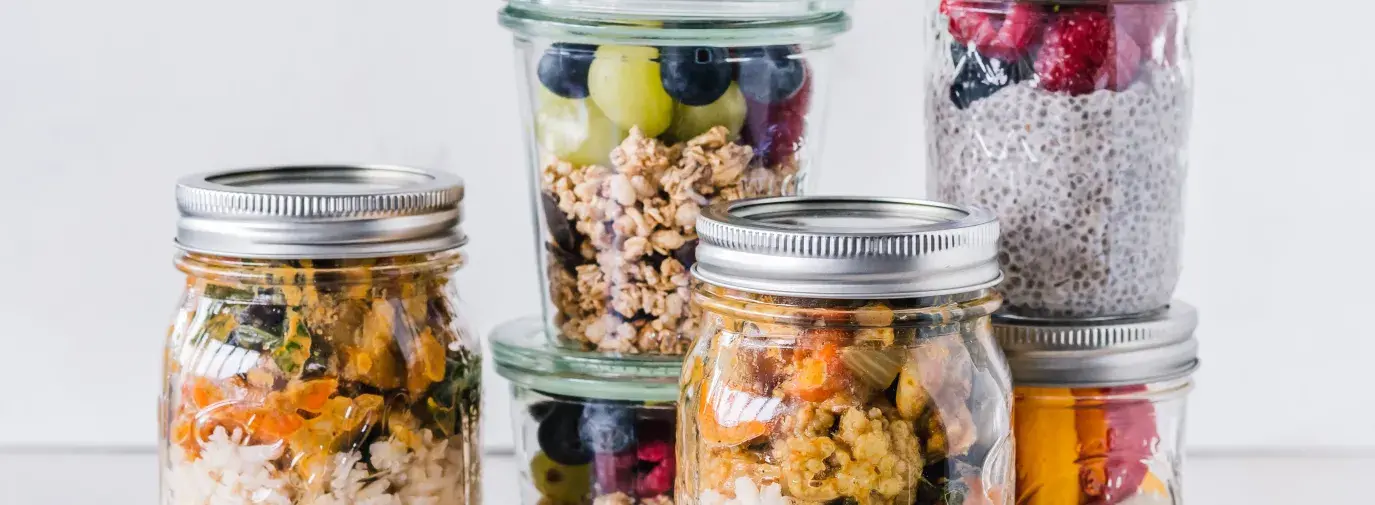
Wasted food comes at a cost to the planet, to your wallet, and to hungry bellies everywhere. The monetary value of that cost is over $408 billion just in the US—accounting for 130 billion meals thrown in the trash. Globally, 11% of all food waste occurs in the home, compared to the 7% that occurs in food service and retail, according to a 2021 UN study. It’s time to stop wasting food in any way we can. Whether you have two minutes or a few hours, make room in your schedule for these ways to reduce food waste!
Check the Expiration Dates: 1 Minute
Don’t be fooled by the “best by” and “sell by” dates on food. These time stamps do not indicate safety, but rather when a manufacturer thinks the food is at peak freshness. Yet because this is not made clear to the buyer, people automatically throw out food past its stamped date, resulting in wasted food. Instead of depending on arbitrary sell dates, get used to sniffing out spoilage—such as sour or rancid smells, and looking for discoloration, slimy film, or mold—to make your food and your dollar last a little longer.
Properly Store Your Produce: 5-10 minutes
Keeping fruits and veggies perky is possible when stored properly. Plastic bags can hasten the ripening of potatoes, which need to breathe. Refrigerated fruits and veggies can benefit from being stored in airtight containers, which prevent the cold air of the refrigerator from drying them out. Leafy greens and spring onions will stay fresh and crunchy when their ends are placed in a jar with water, much like a bouquet of flowers, or when they are swaddled in a damp towel and placed in the refrigerator. Lastly, some produce release ethylene gas as they ripen, such as bananas, apples, and tomatoes. Others, such as lettuce, broccoli, and onions are sensitive to ethylene and will age faster next to them. It’s best to keep the ethylene-emitting produce away from the ethylene-sensitive ones.
Arrange Your Refrigerator for Your Eating Habits: 20 Minutes
We often grab what’s at eye level—it’s the most convenient. That’s why the leftovers in the back are forgotten and the produce in the bottom drawer goes bad. Instead of loading the door full of sauces, try putting those in the bottom drawer—you’ll dig for what you want when you need it. Put produce and healthy snacks in the door. Put your prepped meals at eye level and in order by the days it will be eaten. Choices that are easy to find are more likely to be eaten and less likely to go bad.
Plan Your Meals: 2-3 Hours
The more precise you are about what you’re going to eat and when, the less food you’ll waste. Meal-planning apps can help! For example, Yummly (free online or for iOS, Android), features millions of recipes, allowing you to choose your meals and export grocery lists. Visit your local food co-op or browse their website for recipe inspiration. French Broad Food Co-op{GBN} has several recipes on their blog—your local co-op probably has some, too!
Start a Little Free Pantry: 1 Hour a Week
A little free pantry is a publicly accessible cabinet, bookshelf, or drawers stationed in a neighborhood and filled with pantry goods. Little free pantries, created and managed by the community, operate best when supplies are stocked organically—meaning someone gives when they have excess, and someone takes when they need. This can include produce, dry foods, canned goods, and personal care items.
Volunteer With Food Rescue Groups: 4 Hours or More
Find groups across the country that are gleaning dropped produce from fields or rescuing wasted food from stores and restaurants and sending it to food pantries for food-insecure households. The National Gleaning Project has a nationwide map to help you find a gleaning group in your state or city. Additionally, you can volunteer at a food bank, where you can sort food in the warehouse, pass out food at distribution sites, or make home deliveries.
Wasting less food in a food system focused on mass production will not solve the issue completely. Choosing to purchase from slow food and seasonal restaurants, and shopping locally bring the food system to a smaller scale. When growers don’t have to focus on the mass production of food, they can grow smaller batches that are less wasteful to begin with.







